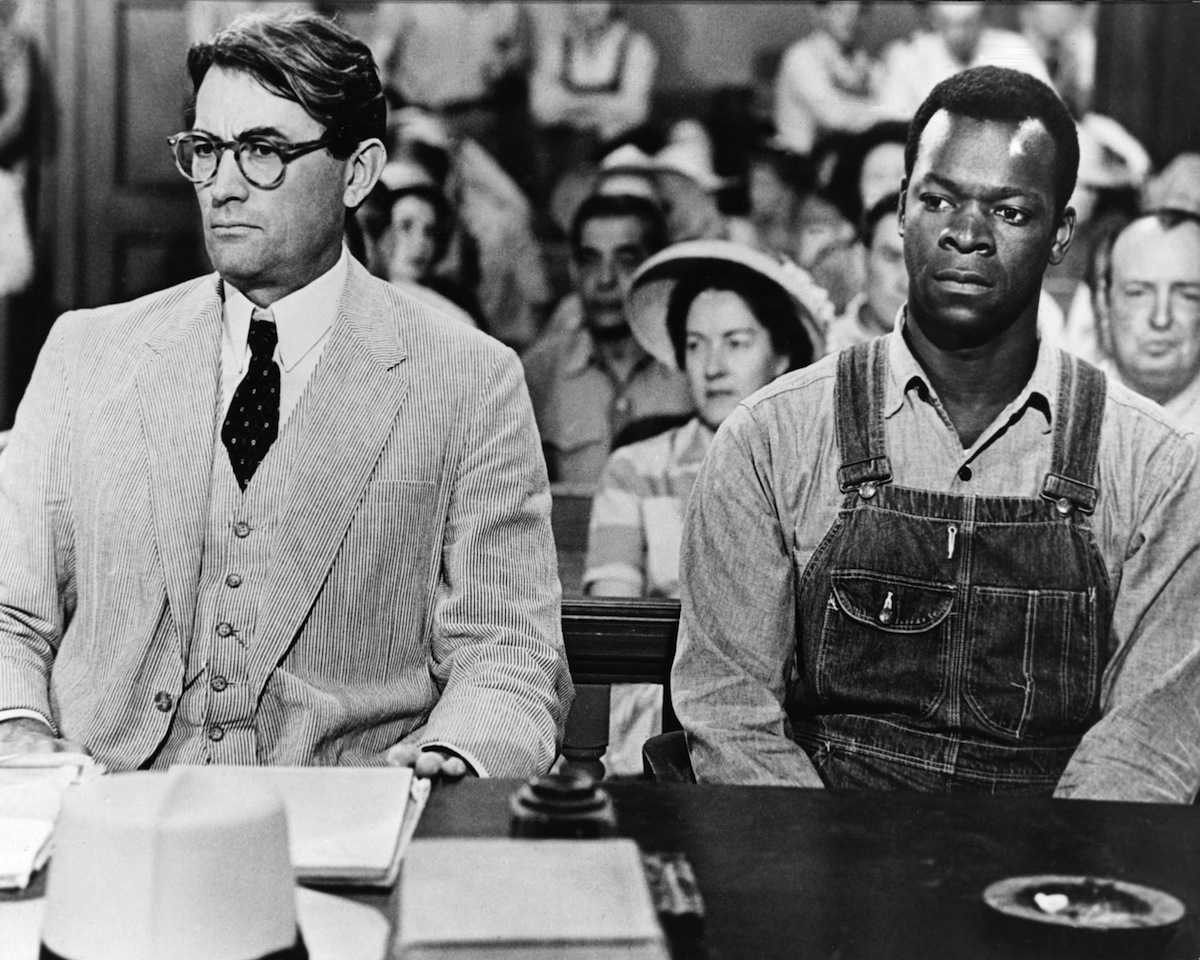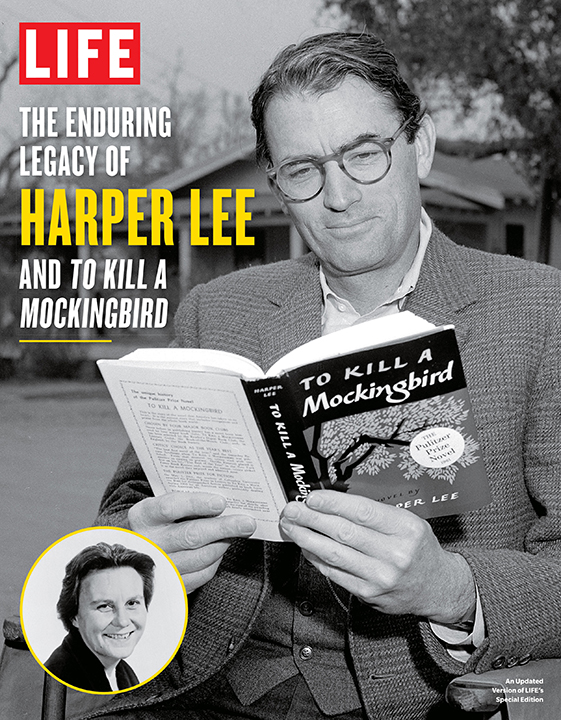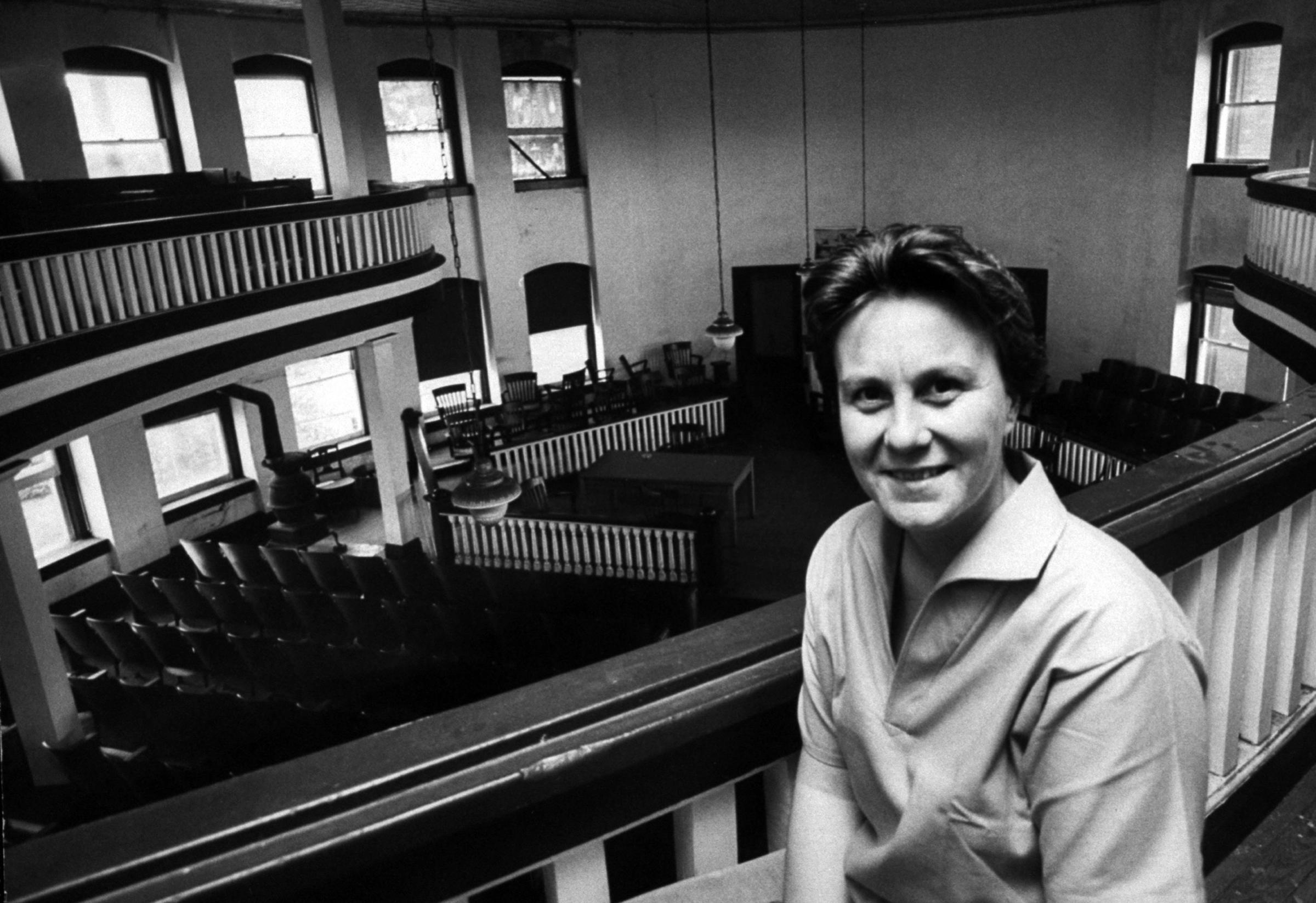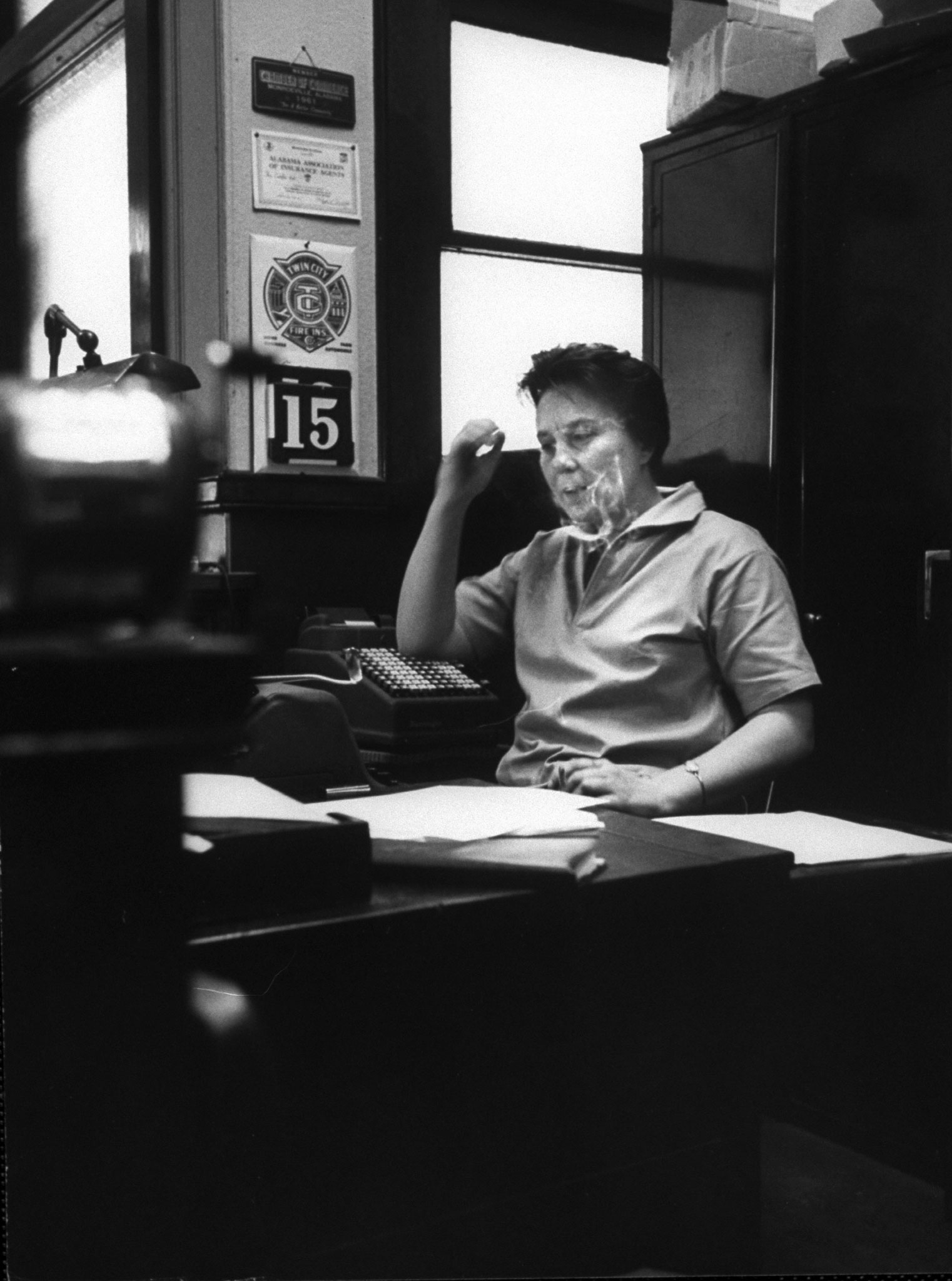
With the news of the death of Harper Lee, LIFE Books has just released a new edition of The Enduring Legacy of Harper Lee and To Kill a Mockingbird, a volume exploring the lasting influence of Harper’s Lee’s Pulitzer-prize winning novel, the making of the classic film with Gregory Peck and the fascinating life of the author—as well as the issue of civil rights at the time that she was writing Mockingbird.
Below is an excerpt from one of the chapters dealing with the subject of race in America:
In 1960, when To Kill a Mockingbird was published, much of white America viewed the coming together of the races as immoral, dangerous, even ungodly. A white woman would never admit to doing what the Mockingbird character Mayella Ewell does, breaking a “time-honored code” by kissing Tom Robinson, a black man. And after being caught, she seeks to save herself from the scorn of society by accusing Robinson of raping her.
Such an accusation was a death sentence for an African American man. “Rape was the central drama of the white psyche,” says Diane McWhorter, author of the Pulitzer prize–winning Carry Me Home: Birmingham, Alabama: The Climactic Battle of the Civil Rights Revolution. “A black man raping a white woman justified the most draconian social control over black people.” The vigilante punishment for such a sin was lynching, as would have been the case with the mob of white men smelling of “whiskey and pigpen” who herd up to Maycomb’s jail to cart away Robinson. While they are stopped, in Mockingbird, because Scout Finch shames them, many real-life incidents went unchecked. Between 1882 and 1951, 3,437 blacks in the United States died that way, 299 of them in Alabama.
Harper Lee’s father, Amasa Coleman Lee, was a lot like Scout’s father Atticus Finch, and she clearly sketched him and local events when creating the plot of Mockingbird. As with Atticus, A.C. Lee was a lawyer, and, like Scout, the young Harper recalled earlier, “I did sit in the courtroom watching my father argue cases and talk to juries.”
Mockingbird paralleled at least three cases that were objects of contention in the Monroeville of her childhood, and Lee once commented how, in her novel, “the trial, and the rape charge that brings on the trial, are made up out of a composite of such cases and charges.” Seven years before Harper’s birth (in 1926), the senior Lee defended two blacks accused of murder. At the time, “the idea that someone like Lee would represent a black is by no means abnormal or unusual, though not typical,” says Wayne Flynt, distinguished university professor emeritus at Auburn University and a friend of Harper Lee. “People like her father had grown up in churches. They were not threatened intellectually, economically or politically by blacks.” A.C. Lee’s clients were executed, and he was so overcome that he never took another criminal case.
Next: In March 1931, just before Harper turned 5 years old, a bold-headlines case gripped Alabama. A group of blacks and whites got into a fight on a train. As the police arrested the nine young blacks, they came across two white prostitutes. In order to avoid being charged with consorting with blacks, the women accused the men of rape. Tried in Scottsboro, Alabama, eight of them received death sentences. Over the next few decades the Scottsboro Boys, as they were known, became causes célèbres of the civil rights movement—their case twice advanced to the Supreme Court. It took until 2013 for the men to be exonerated.
Then, third: In November 1933, outside Monroeville, a poor white woman, Naomi Lowery, claimed that a black man, Walter Lett, had raped her. At the time A.C. Lee was editing The Monroe Journal, and his paper covered Lett’s trial. There was fear that Lett would be lynched. Many of the town’s citizens, including Lee, petitioned Alabama governor Benjamin Miller, seeking clemency, and Miller commuted Lett’s death sentence to life in prison. To say that these stories came home in the Lees’ house is to state the obvious.
Harper Lee shows signs of hoped-for change in her book. “Moral courage is really inconvenient and it rarely goes unpunished,” says McWhorter. But A.C. Lee would not be punished. Characters like the fictional Atticus Finch and real-life people throughout the South were suddenly agitating within the strictures of society, and Harper Lee was ready to join the proud parade—a parade that was very happy to have her. Reverend Martin Luther King Jr., no less, would write in his book Why We Can’t Wait, about “the strength of moral force,” and how, “To the Negro in 1963, as to Atticus Finch, it had become obvious that nonviolence could symbolize the gold badge of heroism rather than the white feather of cowardice.”

LIFE’s new special edition, The Enduring Legacy of Harper Lee and To Kill a Mockingbird, is available on Amazon.
See Harper Lee's Secluded Alabama Life



![Harper Lee [& Family] Harper Lee visiting her hometown, Monroeville, Alabama, in 1961.](https://api.time.com/wp-content/uploads/2015/03/150312-harper-lee-04.jpg?quality=75&w=2400)


More Must-Reads from TIME
- Why Trump’s Message Worked on Latino Men
- What Trump’s Win Could Mean for Housing
- The 100 Must-Read Books of 2024
- Sleep Doctors Share the 1 Tip That’s Changed Their Lives
- Column: Let’s Bring Back Romance
- What It’s Like to Have Long COVID As a Kid
- FX’s Say Nothing Is the Must-Watch Political Thriller of 2024
- Merle Bombardieri Is Helping People Make the Baby Decision
Contact us at letters@time.com